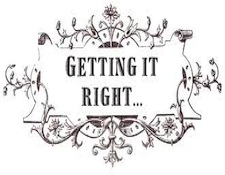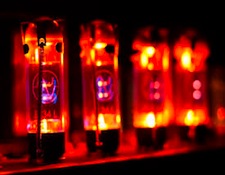It’s the time of year for saving money!

I had the pleasure of sitting in on a recording session a few days ago, NOT as any kind of participant, but simply as a grateful invited guest. The venue – a custom-designed and, to judge by its sound, brilliantly-designed 110 seat hall at a prestigious local university – was perfect for the superb young jazz quartet performing, and the whole setup, from the choice and placement of microphones (AKG C24 and C12), to the mode and machinery for recording (highest-quality digital and tubed analog tape run simultaneously), to the four-camera video record made of each “take”, were all outstanding.
I had a wonderful time, but as I sat there I couldn’t help wondering why it was that my host had made it a point to tell me that the analog electronics were tubed. Was he simply saying that the recording crew was all nostalgia buffs? Or was he implying that tubes would give better sound than solid-state? If so, why wasn’t the digital gear ALSO tubed? And if not, why use tubes at all? Why, for that matter was the recording being done in BOTH digital and analog? Was one better than the other? If so, how? And, whether yes or no, why do both?
I’m sure that one reason for the analog recording was because an LP release is planned, and people prefer that LPs should be analog from start to finish. But why? If the analog version is being used for the LP because it’s better-sounding, then shouldn’t it be used for the CD, too? Don’t we want good-sounding CDs? And if it isn’t better-sounding, then why use it for the LP?
Picking-up on that same theme, we’ve been told that digital recording offers flatter frequency response, greater signal-to-noise ratio, greater dynamic range, and other important advantages. Although there are people out there who will argue against all of those, anybody who’s ever used a razor blade and an EdiTall block knows that digital is CERTAINLY easier and considerably more precise for editing; so, if analog ISN’T better sounding, why not take advantage of whatever good points digital does have, and use it for both versions?

The fact of it is that, like everything else in audio, it’s all a matter of taste. Even with the digital and LP versions recorded (as they were) from exactly the same feed, from exactly the same microphones, and even if – and this is not at all certain – neither version has any subsequent equalization or processing of any kind, the two recordings will still sound different from what I heard at the recording session. For one thing, neither of the two mics used was at the position that I was in when the musicians were playing, and two mics meant TWO positions! For another, whether you prefer digital or analog, or are completely indifferent to both, there ARE differences in the sound of digital and analog recordings; neither is perfect; both have flaws; and the flaws of the two are different and different-sounding. Finally, even if by some miracle of skill, advanced technology, and pure good luck, the two recordings were both not only identical to each other, but both sounded EXACTLY like what I heard from where I was sitting at that recording session, neither would ever sound exactly like what anybody else heard in that same room at that same time!
And that is both the great limiting factor and the great glory of our audiophile hobby.
I remember hearing, once, that for a hobby to be successful, it must be able to take as much or as little of whatever it is (time, money, effort, or whatever else) that the hobbyist wants to devote to it, and it must never be finished, because if it ever were, he’d just have to find another one.
Audio meets those conditions perfectly: Guys who are very rich or very committed (or who, perhaps, OUGHT to be committed) can spend ― given things like Audio Note (Ongaku), Burmester, and FM Acoustics electronics, multi-hundred thousand or even million dollar speaker systems, violently expensive turntable setups and CD players, and $16,000 or even $50,000 cables ― nearly unlimited amounts of money on their systems. Then, with the connivance of Theo Kalomirakis and other great designers, they can spend even more money on the rooms to house them in. Other guys can go another route, entirely, and invest, instead of money, tremendous amounts of time, ingenuity, and enthusiasm in building a system that’s all or nearly all DIY. Even guys who don’t want to go to the extremes can still have fun playing at whatever level they want to, for whatever level of expenditure they want to make, or even ― by, instead of buying anything, just reading the literature and memorizing the spec’s as a sports fan might do ― for no level of expenditure at all!
And they can all do whatever they do with the firm and comforting knowledge that no matter how good their system gets or how expert they, themselves, may become, they’ll never get it completely right, so the game will never be over.
Hooray!





